World Autism Awareness Day
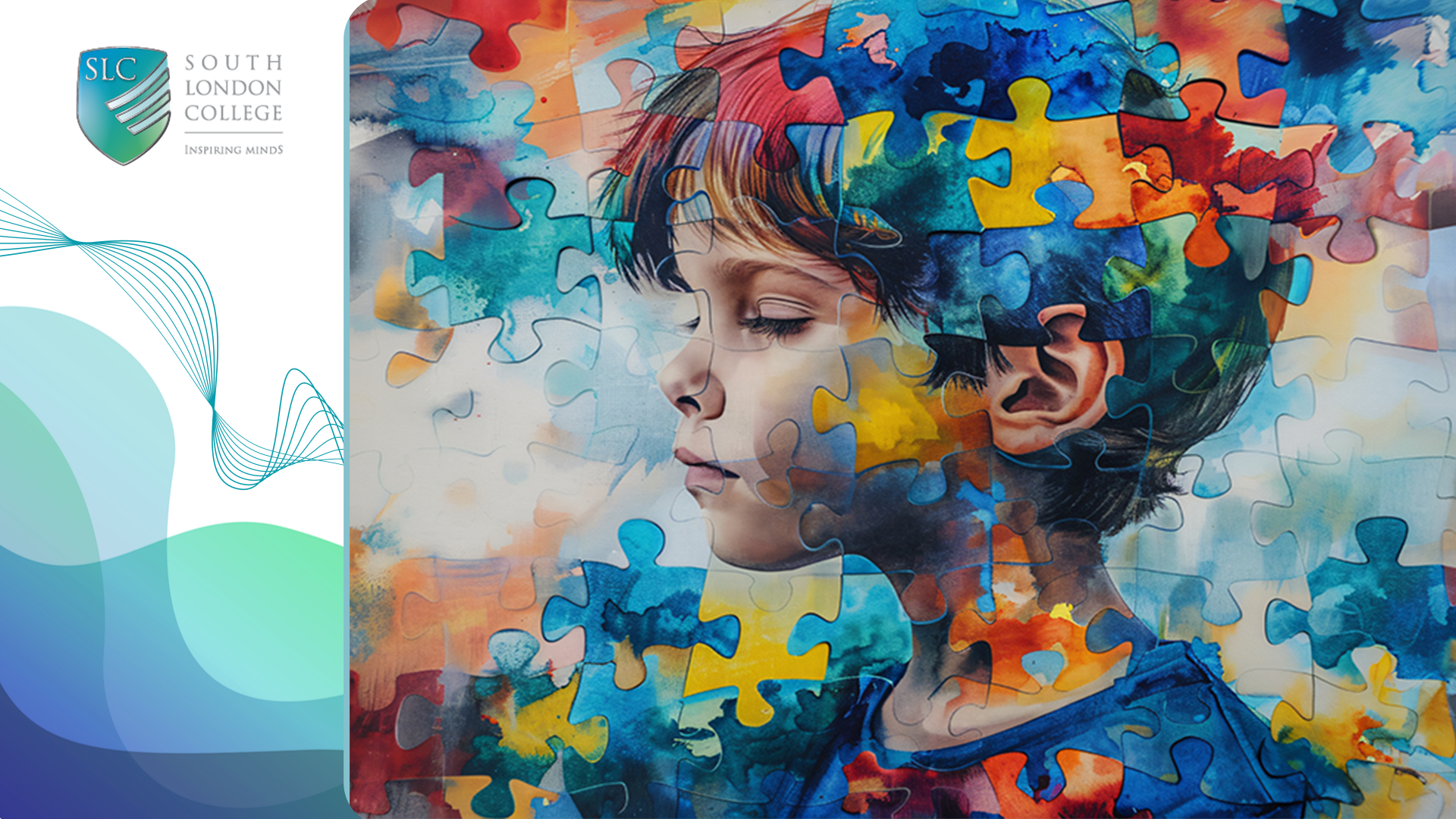
[Autism Symptoms]
Did you know? The World Health Organisation estimates that about 1 in 100 kids worldwide has autism. This number acts as a global average, with reported rates differing a lot across studies. Some careful research points to even higher numbers. Yet, in many poorer countries, we don’t know much about how common autism is, leaving gaps in what we understand.

World Autism Awareness Day happens every year on April 2nd. The United Nations recognises this day to boost global understanding, acceptance, and support for people with autism spectrum disorder (ASD). This key day pushes for inclusion, fights for equal rights, and shows off the special strengths and input of autistic people.
It also spreads the word about the hard times people with autism and their families face stressing how important it is to spot and help with autism. People around the world come together to encourage kindness, respect, and unity welcoming the worth of brain differences.
This year’s World Autism Awareness Day theme, ‘Empowering Neurodiverse Communities,’ highlights how crucial it is to create helpful welcoming spaces where people with autism can grow and succeed.
What is Autism? Debunking the Myths on World Autism Awareness Day
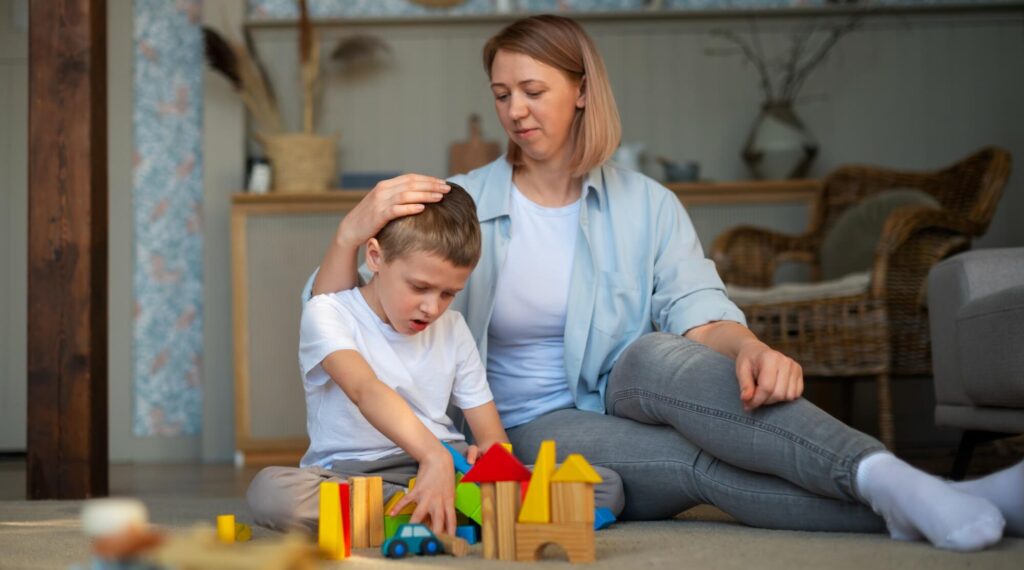
Autism Spectrum Disorder (ASD) has an impact on how people interact with their surroundings and communicate with others throughout their lives. Each person with autism has their own experiences, strengths, and needs for support—this makes ASD a varied spectrum. In the past, doctors saw conditions like Asperger’s syndrome as separate from autism. Now, they see them as part of the same spectrum, which they call Autism Spectrum Disorder (ASD).
Recognising the Signs of ASD
On World Autism Awareness Day, it’s crucial to grasp the main symptoms of Autism Spectrum Disorder (ASD), which typically fall into two main categories:
- Social & Communication Challenges
- Restricted & Repetitive Behaviours
These symptoms often show up in infancy, but they might not be obvious until a child is 18 months or older. In some instances, ASD is only diagnosed in adulthood.
Signs in Children
Social & Communication Difficulties:
- Limited pointing, sharing, or responding to others
- A preference for being alone
- Delayed speech or repetitive use of language
- Avoidance of eye contact
Behavioural & Sensory Signs:
- A strong attachment to routines and distress when changes occur
- Repetitive movements like hand-flapping, rocking, or spinning
- Over- or under-sensitivity to sounds, lights, or textures
- An intense focus on specific interests
- Challenges with toilet training
In Older Children
- Difficulty understanding social cues or body language
- A strict adherence to rules
- Struggles with making friends
- Narrow, highly focused interests
- Sensory sensitivities, such as aversion to loud noises or certain textures
Signs in Adults
- Increased sensitivity to environments, including noise, lights, and crowds
- Feelings of isolation, even when surrounded by others
- A literal interpretation of language
- A keen attention to detail
- Social anxiety or challenges in maintaining conversations
- A preference for routine and predictability
Busting Common Autism Myths
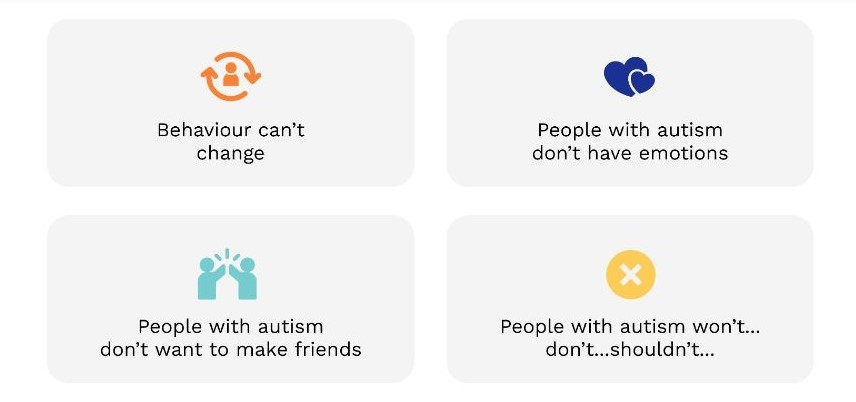
Wrong ideas about autism can create stigma, leave people isolated, and make it hard to get help. Let’s clear up five big myths:
Myth 1 – “Vaccines cause autism.”
❌ Not true. A lot of scientific studies show no connection between vaccines and autism. Genes and environment play a role in ASD—not shots.
Myth 2 – “Autistic people don’t care about friendship.”
❌ Not true. Many people with autism want to make friends but might find social rules tough or have had bad experiences. With time and help, they can form strong bonds.
Myth 3 – “Kids with autism can’t learn.”
❌ Not true. The right teaching methods help people with autism succeed. Everyone moves at their own pace, but steady, custom support makes a big difference.
Myth 4 – “Poor parenting leads to autism.”
❌ Not true. How parents raise their kids doesn’t cause autism. While a good home life helps, ASD is about brain development, not upbringing.
Myth 5 – “All autistic people have special talents.”
❌ Not true. Some folks have amazing skills (like remembering things or doing math), but this isn’t true for everyone. Autism looks different in each person.
Embracing Neurodiversity
By promoting inclusive education and workplaces, we can build a society that values diversity and empowers autistic people to thrive.
This World Autism Awareness Day, let us combat misunderstandings, encourage acceptance, and create a more understanding world for everyone.

World Autism Awareness Day History
Autism Spectrum Disorder (ASD) is a developmental condition that impairs social communication, interaction, and repetition of behaviours. Much has been known about it in the last century.
Early Beginnings of Autism
- In 1911, psychiatrist Eugen Bleuler coined the word “autism” to characterise a type of acute social detachment in schizophrenia. At the time, it was not regarded as a distinct condition.
- In 1943, Dr. Leo Kanner, a paediatric psychiatrist, wrote ‘Autistic Disturbances of Affective Contact,’ which identified autism as a social and emotional illness distinct from schizophrenia.
- 1944 – Hans Asperger presented his research on ‘Autistic Psychopathy,’ which describes children of average to high intelligence but with considerable social and communication difficulties
In 1980, significant research studies indicated individuals that autism is a unique condition and not equal to schizophrenia.
Organising World Autism Awareness Day
To assist individuals in comprehending and embracing one another globally, on December 18, 2007, the United Nations General Assembly adopted Resolution 62/139. The resolution declares April 2 as World Autism Awareness Day. This movement requests nations to:
- Educate individuals about ASD
- Assist with research for improved treatments and inclusion
- Defend the rights and welfare of autistic individuals
Autism is a Spectrum
In 2013, the American Psychiatric Association revised the definition of autism in the DSM-5 (Diagnostic and Statistical Manual of Mental Disorders, 5th Edition). They merged previous types (such as Asperger’s syndrome) into a single main diagnosis. This revision reflected the various symptoms, strengths, and support needs that autistic individuals possess.
Today, World Autism Awareness Day is progressing, combating misconceptions, and observing various ways of thinking globally.
Why World Autism Awareness Day is Important?

Autism awareness is for everyone, not only for those with autism. Autism touches the lives of millions of individuals worldwide, and knowing its impact makes us more understanding and compassionate. Through learning about autism, we:
- Reduce stigma and discrimination
- Promote acceptance and belonging
- Provide opportunity for autistic individuals to thrive
Knowing more about autism is extremely essential for early identification and assistance. Numerous individuals, particularly females and adults, are not diagnosed due to confusion regarding autism. Increased awareness:
- Helps to detect autism earlier
- Connects families with beneficial support services
- Improves long-term outcomes through timely therapies
By embracing neurodiversity, we envision a world where differences are not only tolerated but embraced. On World Autism Awareness Day, let us vow to learn, accept, and build spaces where all can thrive to their best.
Witnessing the Abilities and Talents of Autistic Individuals

Autism has its difficulties, but it also has numerous brilliant strengths and skills. By listening to and valuing the unique gifts in the autism population, we can highlight the frequently overlooked aspects of this diverse condition.
1. Abilities and Talents
Individuals with autism possess numerous strengths that are usually superior to others’ expectations. Some of the most significant are paying attention to details, possessing excellent memory, and being exceptionally logical in their thinking, among others. These are unique abilities found in individuals on the autism spectrum. These strengths enable individuals to become better individuals and make society a better place. For instance:
- Attention to detail allows you to grasp subjects more clearly.
- Good memory aids in recollection of many details and facts.
- Reasonable thinking seeks various solutions to issues.
Maintaining these traits enables individuals to work well and also promotes diversity in society and workplaces.
2. The Interest in Savant Skills
One wonderful aspect of autism is savant syndrome, in which some individuals possess incredible abilities in mathematics, music, art, or memory. Not all autistic individuals possess these incredible abilities, but those who do demonstrate how unique they are. For instance, some autistic artists paint stunning and intricate pictures that reflect alternative ways of thinking. These pictures reflect the wonderful worlds in their minds, and others can appreciate their talents.
3. Concentrated Focus and Special Skills
Individuals with autism frequently possess unique abilities that extend beyond our typical concepts of intelligence or creativity. One such ability is hyperfocus, wherein they can intensely focus on a task or subject for many hours. This intense concentration enables them to excel in their areas of interest with profound understanding and knowledge, impacting and enhancing the lives of others.
4. Uniqueness in Skills
The unique abilities of autistic individuals demonstrate the various ways their brains process information and engage with the world. Autistic individuals tend to have deep interests in some subjects and get intensely engaged with them with much enthusiasm. Their capacity to concentrate so intensely on their interests demonstrates the significance of individual neurodiverse brains and how they benefit society.
5. Employing and Enjoying Special Skills
It is vital to locate and assist autistic individuals so they can be integrated and fulfil their potential.
Strengths-based education, rather than deficit-based education, enables autistic students to discover and develop their strengths. Various approaches to teaching that address the needs of neurodiverse students provide a secure platform for their development.
Workplaces that embrace various types of thinking benefit companies by introducing fresh ideas and innovative solutions. A congenial work culture ensures that the capabilities of autistic workers are valued and utilised optimally.
6. Problems and Opportunities
Autism has numerous strengths and issues such as social issues, difficulty in communication, sensory sensitivity, and routines. Kindness, compassion, and support appropriate to the individual’s needs are required to tackle these issues. By developing a supportive environment, society can facilitate autistic individuals to overcome obstacles and identify their individual strengths.
Ways to Support Autism Awareness
1. Educate Yourself and Raise Awareness
Take some time to really understand the unique characteristics and strengths of individuals on the autism spectrum. Share what you learn with others and advocate for laws that support the autism community. There are plenty of resources out there, like autism tool kits, that can help parents, caregivers, and communities gain a better understanding of autism. Think about teaming up with local or national autism support organisations to access valuable resources, connect with families affected by autism, and contribute to community initiatives.

2. Offer Emotional Support
Be a safe haven for your loved ones—whether they’re parents, siblings, or friends of someone on the spectrum. Allow them to share their frustrations, sadness, or fears without worrying about being judged. Sometimes, just listening with empathy can make a huge difference. Encourage them to look for or join support groups that provide emotional guidance and a sense of community.
3. Provide Practical Assistance
Small acts of kindness can mean the world. Offer to help by preparing a meal, running errands, or providing transportation. If you’re a grandparent, you might pitch in with household chores, take your grandchild to therapy sessions, or babysit other kids in the family. This kind of practical support can really ease stress and provide relief to those who need it.
4. Volunteer and Contribute
Get involved in local events that support autism-related causes, like fundraisers, awareness campaigns, or family activities. Your time, effort, or donations can make a real difference for organisations working to improve the lives of those affected by autism. Promote acceptance and inclusivity by donating books on neurodiversity to school libraries or educational programmes. These resources help build understanding and empathy among students, educators, and the broader community.
The Role of Education and Advocacy in Autism Awareness
Education and advocacy are crucial in raising autism awareness, enhancing understanding, and fostering inclusivity for those on the spectrum. These initiatives work to break down stigma, share essential information, and empower both autistic individuals and their communities.
1. The Impact of Education
- Spreading Awareness
Through initiatives like awareness campaigns and specialised training for educators and healthcare professionals, education plays a key role in debunking common myths and misconceptions about autism.
- Encouraging Understanding
When people gain a better understanding of the various ways autism can present itself, they can connect with and support autistic individuals more effectively.
- Promoting Inclusion
Education helps create inclusive spaces in schools, workplaces, and communities where autistic individuals feel appreciated and supported.
- Empowering Autistic Individuals
By providing access to knowledge and skills, education enables autistic individuals to advocate for themselves, make their voices heard, and engage fully in society.
- Enabling Early Intervention
Educational resources are vital for early diagnosis and intervention, which can lead to significantly better outcomes for children and young adults on the spectrum.
2. The Role of Advocacy
- Championing Rights
Advocacy is all about standing up for the rights and needs of autistic individuals, ensuring they have access to quality resources, services, and opportunities.
- Addressing Barriers
Targeted advocacy efforts can tackle systemic issues like unequal access to education, employment, or healthcare.
Fostering Acceptance
Advocacy campaigns work to challenge negative stereotypes and attitudes, promoting a culture of acceptance and inclusion.
- Empowering Self-Advocacy
By teaching autistic individuals how to express their needs and assert their rights, advocacy fosters independence and boosts self-confidence.
- Creating Collaborations
To make a real impact, effective advocacy hinges on teamwork among individuals, families, organisations, and policymakers, all working together to foster meaningful, systemic change.
By combining education and advocacy activities, we may create a more inclusive and understanding society in which autistic people’s distinctive perspectives and contributions are really respected.
World Autism Awareness Day Activities
1. Wear Your Support
Show your dedication to raising autism awareness by wearing blue clothing, sporting a hat from an autism organisation, or putting on a shirt that champions autism advocacy. This simple act can create a ripple effect, sparking conversations wherever you find yourself—whether you’re out on the street or shopping at the store. Don’t have any autism-themed gear? No worries! Puzzle pieces are a well-known symbol of autism awareness. Just swing by a local craft store, pick up some blue or puzzle-patterned ribbons, and whip up your own awareness accessories.
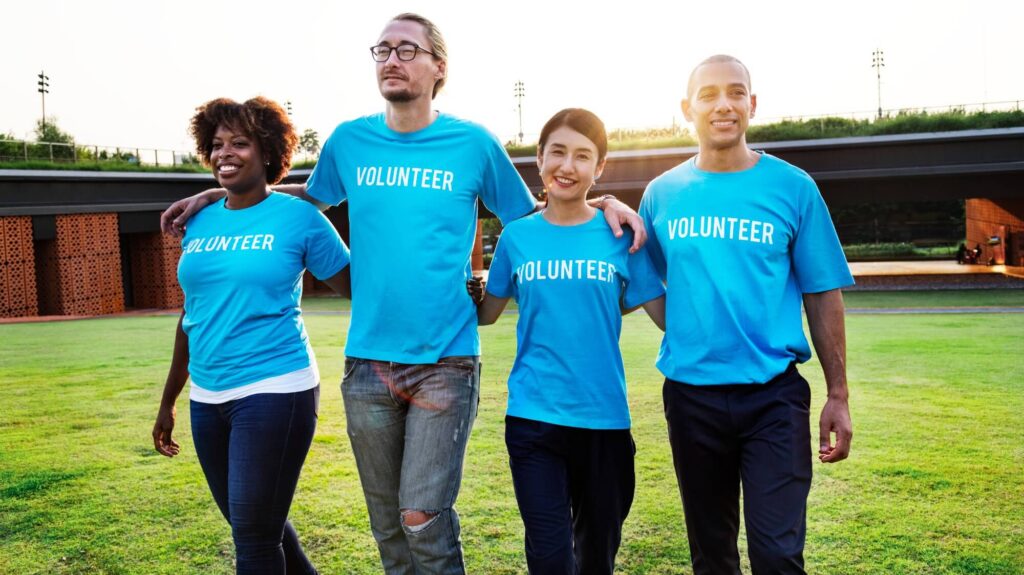
2. Celebrate the Achievements of Autistic Icons
There are so many pioneers and creators on the autism spectrum who have made remarkable contributions in their fields. Take a moment to dive into the work of these inspiring individuals:
- Satoshi Tajiri – The brilliant mind behind Pokémon and a celebrated video game designer.
- Daryl Hannah – The talented actress known for her roles in Kill Bill, Steel Magnolias, and Wall Street.
- Guy Martin – A British former motorcycle racer, skilled mechanic, and beloved TV presenter.
- Dan Aykroyd – The Canadian actor, comedian, and musician famous for The Blues Brothers and Ghostbusters.
Learning about their achievements not only inspires us but also showcases the incredible potential of neurodiverse individuals.
3. Support Autism-Friendly Businesses
Look for businesses that prioritise inclusivity for autistic individuals. Many of these organisations actively hire neurodiverse employees, creating meaningful job opportunities and nurturing inclusive workplaces. By supporting these businesses, you’re helping to amplify their positive impact on the autism community.
4. Explore Autism Through Books
Introduce the topic of autism to your friends, family, and kids through books that feature autistic characters or themes. These stories offer simple, engaging insights into autism, helping to foster understanding and empathy in a way that’s easy to grasp. Whether for young readers or adults, books can be a powerful tool for spreading awareness.
5. Promote Positivity and Kindness
Perform acts of kindness, no matter how big or small, to help make the world more inclusive. Let family members, friends, or people in your community know how much you appreciate them
- Call someone just to say, “Hi.”
- Send a meaningful letter to brighten someone’s day.
- Compliment a stranger and share a smile.
Kindness is contagious—your actions can inspire others to do the same, spreading the spirit of inclusiveness and compassion across your community.
A Future of Acceptance and Inclusion
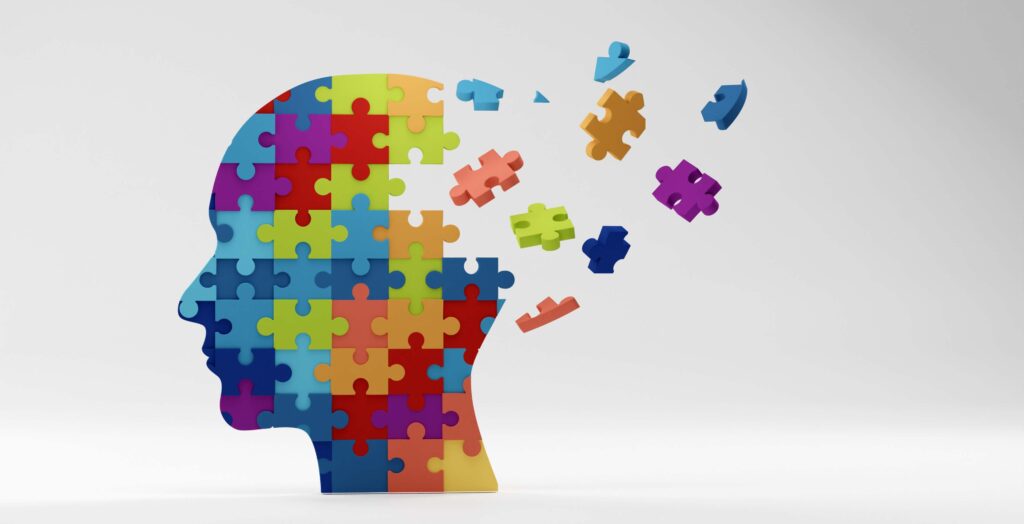
Discrimination against autistic individuals is still a major hurdle, with deep-rooted barriers that keep them from living meaningful and fulfilling lives. For example, even though they are a vulnerable group, autistic individuals often find themselves left out of most climate action plans and initiatives. Unfortunately, the journey toward acceptance and inclusion in education and the workplace is still moving at a snail’s pace.
To build a brighter future for both people and the planet through sustainable development, we need to come together, guided by the idea of leaving no one behind. Actively including autistic individuals is essential—not just as protected groups but also as valuable contributors to society.
It’s crucial for researchers, health professionals, educators, businesses, policymakers, communities, and friends to step up and help promote diversity, equity, and inclusion. By joining forces, we can create a more inclusive world that truly values the unique perspectives and contributions of autistic individuals.
Conclusion
World Autism Awareness Day is a meaningful reminder of how important it is to promote understanding and awareness about autism. By raising awareness, we can take real steps toward creating an inclusive and supportive environment for individuals on the autism spectrum and their families.
There are plenty of impactful ways to get involved—join awareness events and activities, educate yourself and those around you, support local autism organisations, advocate for policies that are friendly to autism, and be a caring ally.
Together, we can dismantle stigma, lessen discrimination, and encourage inclusion, paving the way for a society that truly embraces and values every individual, including those with autism.
If you’re interested in deepening your understanding of autism, why not check out our Health & Social Care or Teaching & Education courses? They’re designed to give you valuable insights and skills.



0 responses on "World Autism Awareness Day "